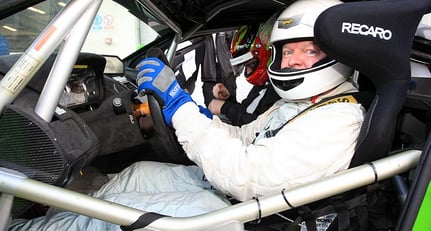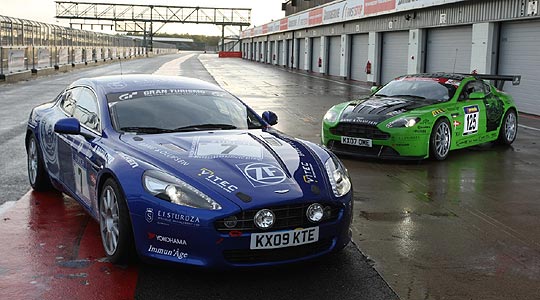
An extraordinary race, the Nürburgring 24 Hours. Cars from near-road specification to full-race GT2 cars take part in this mid-May festival of motor-racing near-madness, 197 of them this year all on the same snaking, scary track at the same time. No race has more entries than this one.
The cars Aston Martin has entered have been virtually standard in their major mechanical parts, the idea being that the engineers can use the race as an endurance test and so gain knowledge that will improve the cars in the showrooms. Up to now the race cars have been the two-door coupés you would expect but, with the launch this year of the Rapide saloon, it was almost a given that a stripped-down, race-prepared Rapide would find itself circulating the 'Ring – and it ran perfectly to finish 34th overall.
The Rapide's stablemate was a V12 Vantage, wearing bodywork resembling that of Aston Martin's more extreme race cars, complete with air-exits behind the front wheelarches and a big wing on the tail. The Rapide, by contrast, wore almost standard bodywork, but it had still lost 470kg compared with the road car. Both cars used the high-torque version of the 6.0-litre V12, as tuned for the roadgoing Rapide, but freer-flowing exhausts helped push power up from 477 to 'just under' 510bhp.

The V12 Vantage led its class for more than half the race, and at one point was up to 20th overall, but a failed driveshaft and two lengthy pitstops saw it relegated to 39th.
Cut now to Silverstone on an uncharacteristically sunny November day. Here are the two racing cars, still in full 'Ring livery, ready to take to the track. Not the full track; this will be the 'International' circuit, with Becketts a near-hairpin and a straight through the middle up to the Luffield sequence. And I'm about to drive them.
First off, a few laps in a road Rapide to calibrate myself and set a template. It feels rapid, as its name suggests, but it's also measured, languid, unflustered in Silversone's wide spaces. Shedding nearly half a ton might change things quite a lot, I feel.
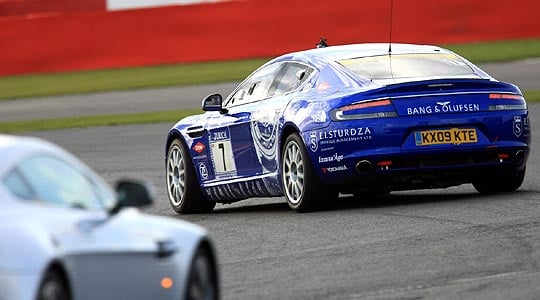
Now the Rapide race car, known as Katie on account of her KTE number plate (both racers are road-registered). A glance inside the cabin shows where much of the weight has departed; where once were leather and plush carpet and sumptuous fittings are now carbonfibre mouldings, Recaro racing front seats, a racing steering wheel, some lightweight Alcantara and much naked evidence of the Rapide's aluminium structure.
Toggle switches and a solid-state instrument pack displace the styled original dials and switchgear, but the paddle-shifters are as standard. So is the six-speed automatic gearbox they control. Side windows are plastic, tyres are Yokohama slicks on 18in wheels, dampers are retuned to suit. The rest is pretty much standard.
Doesn't feel it, though. The engine howls more loudly, of course, not least because the sound insulation has gone, but the first key difference (apart from the fact I'm clamped a lot lower in my seat) is the rate at which the Rapide hurtles from pitlane exit to track. Its power-to-weight ratio has skyrocketed, and 'languid' has just fallen off the lexicon. Now the left-right Maggotts twist before Becketts, and there's a planted precision I now realise wasn't quite there before.
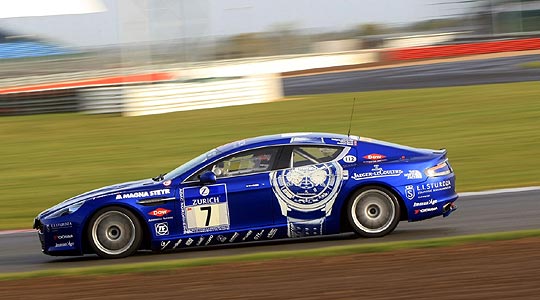
Becketts is taken in an easy surge of power, after a couple of quick, clean downshifts, and now we're hurtling along the straight and I'm marvelling at the grip the slicks have just demonstrated. This is an amazingly easy racing car to drive quickly and tidily, and after a few more laps of this the notion of (relative) languidity has re-entered the list of suitable descriptive words. If you're going to hurtle around the Nürburgring for fuel-tank-size chunks of a whole day, this is a great car in which to do it. You might even put it in automatic mode if you're feeling a touch weary, and it would probably be nearly as quick.
Next, a roadgoing V12 Vantage. It's an interesting contrast. I have to reactivate my left foot (it's a manual) and where has all the grip gone? I prefer manuals on principle, at least for road cars where they help to maintain interest as roads become ever more restrictive, but there's no doubt they tax the brain more when you're attempting a quickish racetrack lap.
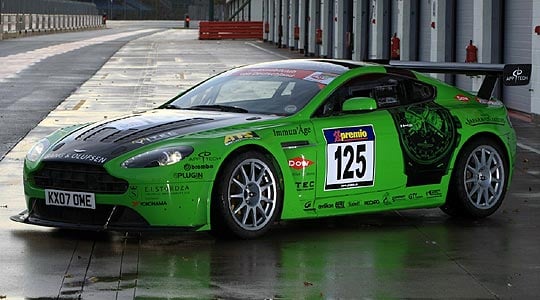
And so to the Vantage race car, called Kermit by virtue of its strident colour. It's similar inside here to the Rapide, with the same basic dashboard architecture, yet it's subtly different. I'm sitting even lower, rendering the view past the windscreen pillars and rollcage yet more obstructed, and ahead of me are broadly standard instruments with the solid-state race set atop the dashboard's centre. And, of course, there's a gearlever.
Yokohama slicks are underfoot, of course, and again a lot of weight has gone missing. Shorter wheelbase apart, though, will the V12 Vantage really feel greatly different from the Rapide?
It will. Yet fiercer-sounding on start-up, it then launches itself with a positivity, a savagery even, not quite felt in the Rapide. That will be the manual transmission, the lack of a torque converter and the lower weight. This really feels the proper racing car, and we haven't even exercised the suspension yet.
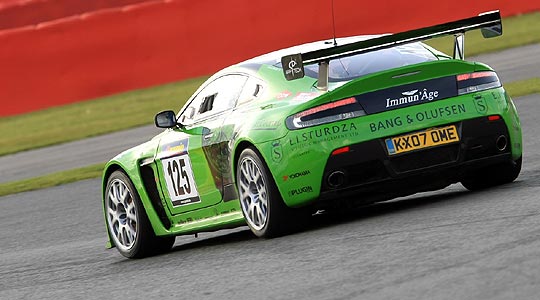
“The Vantage has been an experiment in what happens when you apply downforce,” says Aston engineer Paul Barritt (the man originally behind the roadgoing V12 Vantage). “It has a front splitter and the rear wing, and the extractor panels behind the front wheels to draw air from under the car. The Rapide is as quick down the straight, but the Vantage can brake later and corner faster.”
Too right it can. It helps that the brakes are from the V8 Vantage GT2 race car, but the amount of grip it can generate under braking and turning into a corner is not only way ahead of the Rapide's adhesion: it's in a league far above anything ever experienced in a road car on road tyres, and it's an act of some faith to begin exploring it.
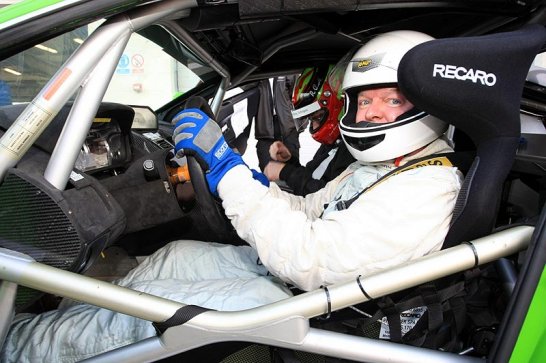

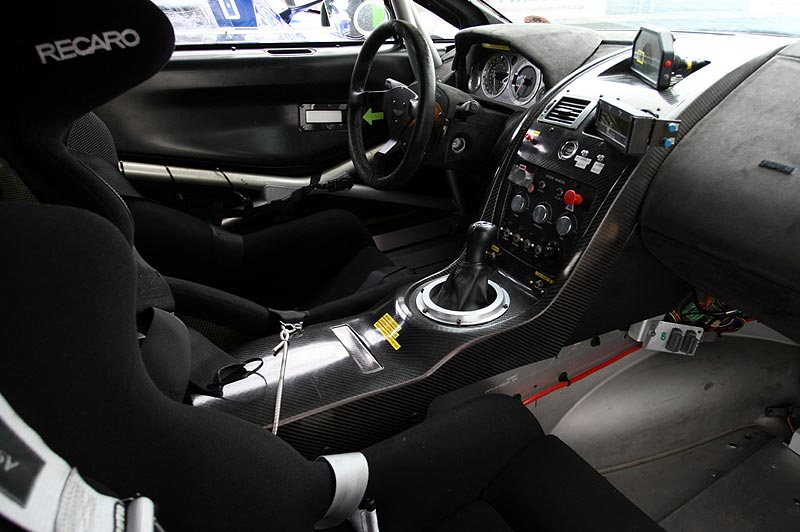
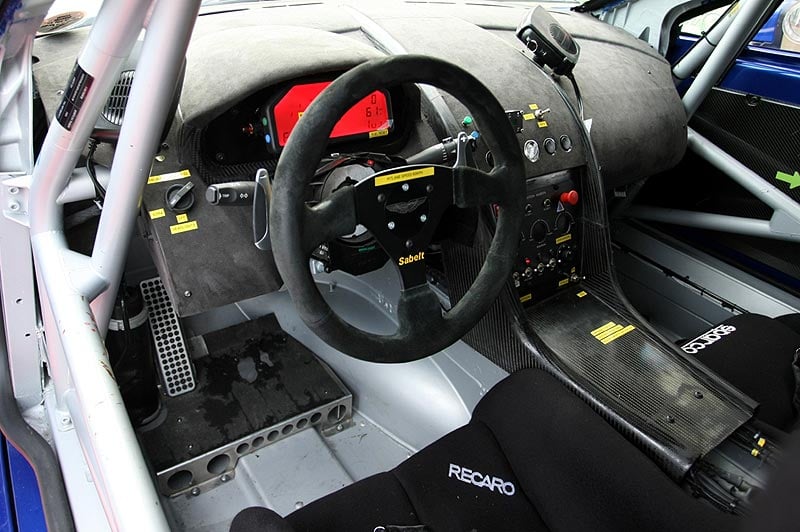
After a couple of laps I realise I can stay one gear higher for most bends than I thought I could, and take the corners significantly faster. Once into the gearchange flow I can get the Vantage balanced just right, pointing at each apex, trying to remember where that apex is on the Luffield left-hander because the sun is in my eyes and the rollcage blocks the view anyway, then finally squeezing on the power to feel a g-force through the fast Woodcote curve before the pit straight such as I have never felt before.
Then Copse. Oh my… it's blind and very fast, and the Formula One drivers take it without lifting. I certainly won't be doing that, but I have never before committed myself so completely to this scary corner and felt such a complete rush of self-generated stimulants as I nudge the kerbing on the exit.
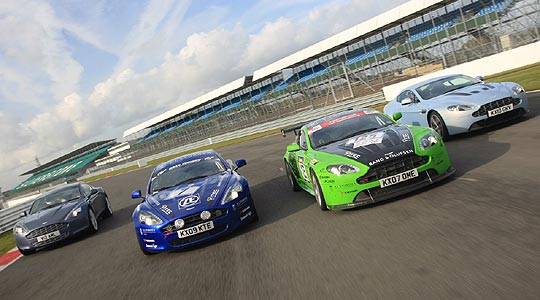
What a fabulous car. It's much more physical to drive than the Rapide, but equally forgiving of its driver's imperfections. I would worry about not seeing other cars were I racing it, such is the restricted view out, but its regular pilots clearly worry less. Twenty-four hours in the downforce-heavy V12 Vantage. What a buzz that must be.
Text: John Simister
Photos: Aston Martin
ClassicInside - The Classic Driver Newsletter
Free Subscription!
